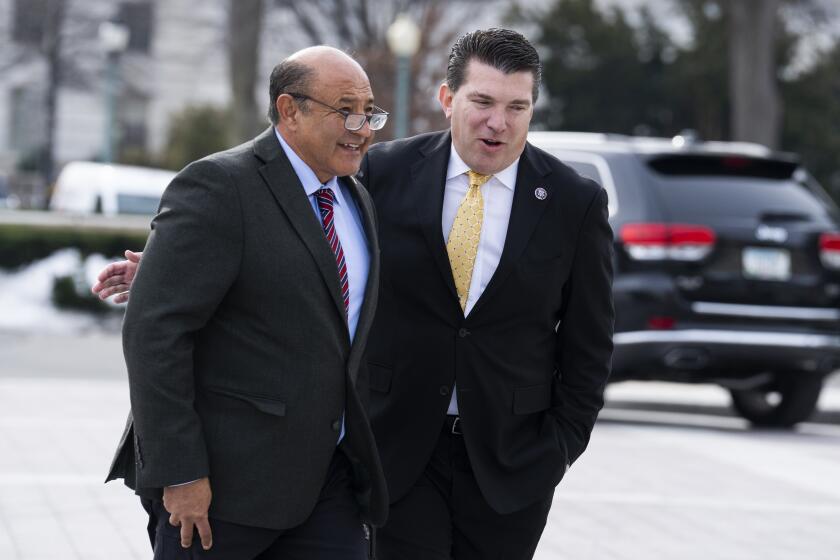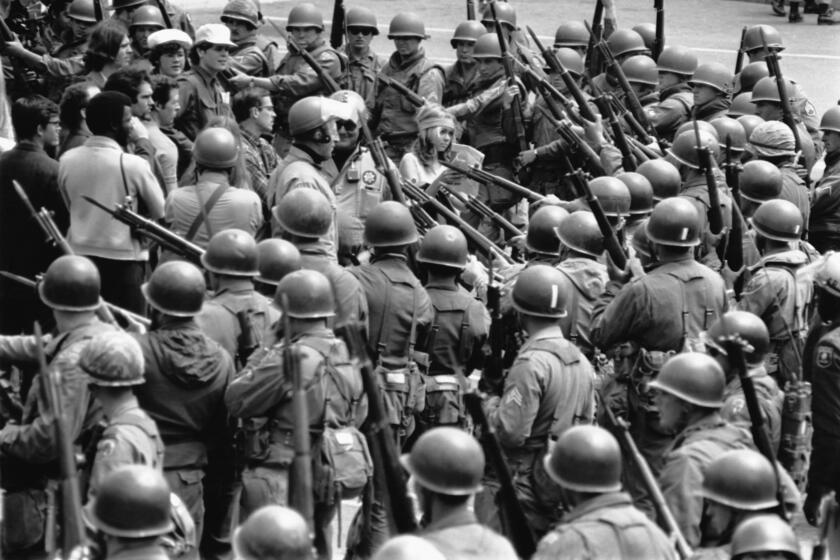The Challenge of Prison Reform
When Edmund G. “Jerry” Brown Jr. became governor of California in 1975, he was warned that the state prison system was an explosion waiting to happen. Brown brought in the toughest man he could find, Ray Procunier, to be his prison boss, and Procunier succeeded in putting a tight rein on potentially rebellious convicts.
Today, Gray Davis, who was Brown’s chief of staff, also faces a difficult situation in the state prison system as he prepares to take office as governor. But Davis’ priority is not controlling the inmates so much as the people who guard them.
Times writers Mark Arax and Mark Gladstone once again have documented efforts to impede investigation of prison guards in the alleged brutalization of convicts. This time, the location was Pelican Bay, the state’s highest-security prison. Prodded by a federal district court, the prison in remote Del Norte County assembled an internal affairs team to probe charges that a handful of guards arranged to have willing inmates stab or beat other convicts as a means of maintaining control of the prison. The guards would reward the attackers with whiskey, food and time out of their cells.
But the internal affairs investigators became subject to repeated complaints by the California Correctional Peace Officers Assn., the guards union, which attacked the honesty and methods of the probers. The Pelican Bay warden ordered the investigators to stop pursuing leads that pointed to certain prison officers, and the head of the inquiry, Dan Smith, was removed. Smith later said, “The department pulled our teeth. . . . Our ability to finish the job was taken away.”
The obstruction was similar to that disclosed earlier by the Times reporters at Corcoran State Prison in the San Joaquin Valley. Federal investigations continue at both prisons to determine whether convicts’ civil rights were violated.
State officials insist that new policies have corrected the problems. They deny that the union derailed the probe, and union leaders say they were just protecting the rights of the guards. But there is no question that the union wields tremendous influence over how the prison system is run, and this presents a tricky problem for Davis, since his campaign received substantial financial support from the correctional officers. As he selects top executives for the Department of Corrections and individual prisons, Davis must demonstrate that the state, not the union, controls the prisons. And he must not tolerate any outside efforts to impede the legitimate investigation of guards’ conduct.
The public cares little about California’s 160,000 convicts as long as they get their prescribed punishment. It falls to state officials, then, to make certain that punishment is administered fairly and humanely.
More to Read
Start your day right
Sign up for Essential California for news, features and recommendations from the L.A. Times and beyond in your inbox six days a week.
You may occasionally receive promotional content from the Los Angeles Times.






